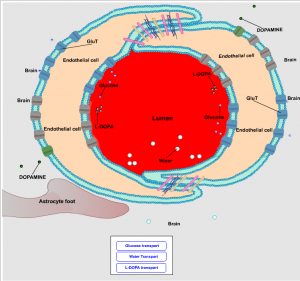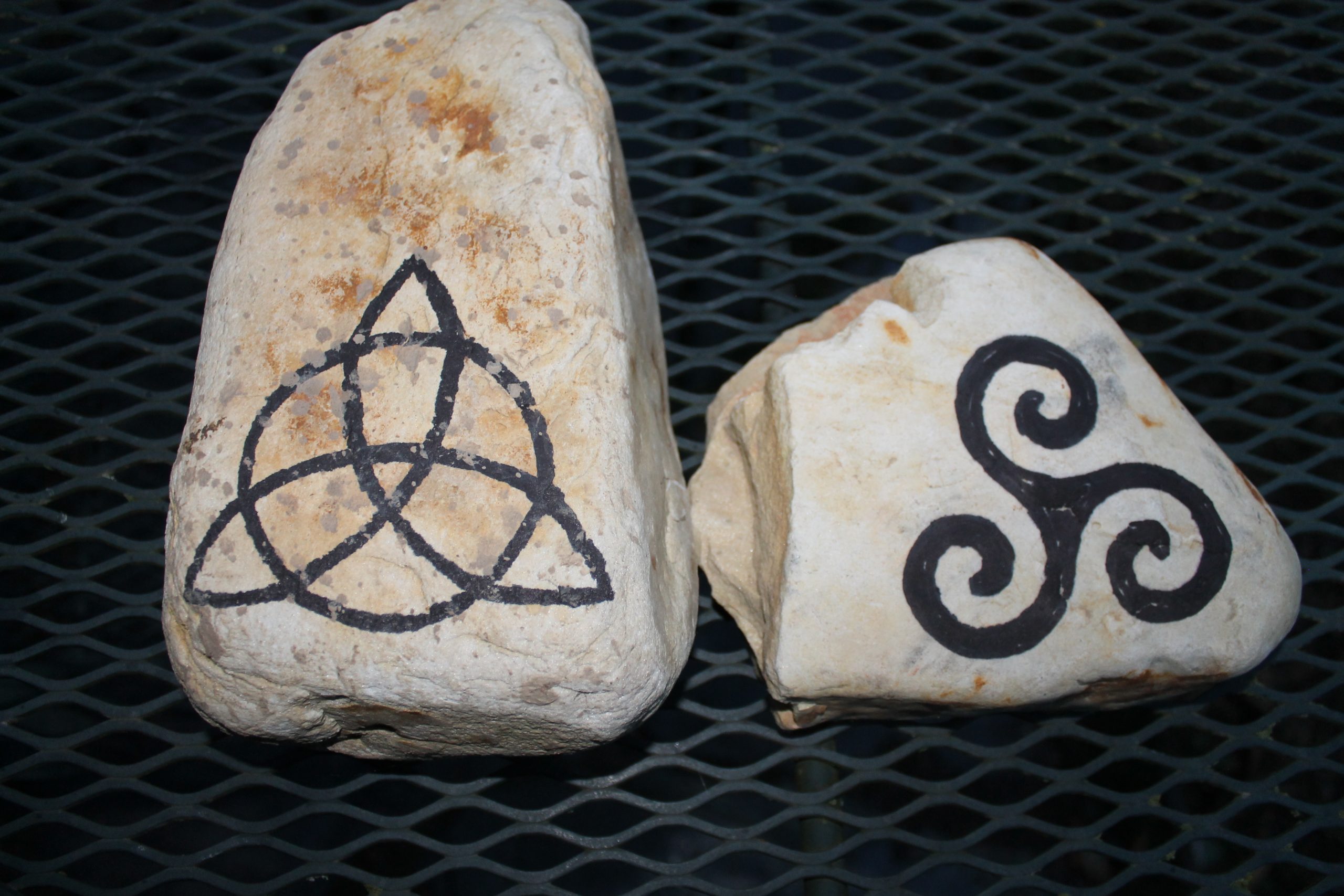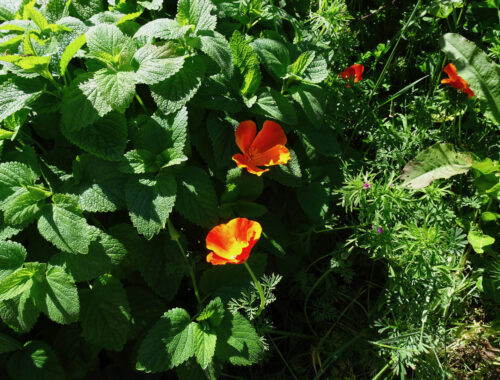Pine Pollen Boost
Pine pollen is nature’s perfect boost for good health and the immune system.
Pine pollen is ‘the sperm’ of the pine tree and almost the same structure as human testosterone. It is the most abundant source of testosterone in the plant kingdom. Isn’t that interesting? What reason could our Great Mother have for making this source of human testosterone in vastly more quantities than is needed for the trees alone. A single mature pine tree can produce 1-3kg of pine pollen in a season – we are surrounded by pine forest here!
At a certain time, usually in early April here but it can be in early March if we’ve had a mild winter, all the pine trees release their pollen in an explosion of green smoke across the hills. They do it several times over a period of about 10 days. This clip from the Himalayas shows what it looks like:
This presentation explains the benefits of pine pollen, how to get it and use it, very clearly.
Pine pollen is a superfood and an adaptogen, which essentially means it helps the body adapt to stress. Stress is created by adrenaline and cortisol which are produced primarily by the adrenal glands. Cortisol shuts down many functions, like the immune system, the digestive system, the reproductive system and the prefrontal cortex, so that adrenaline can use more energy to pump blood to the arms and legs so you can run or fight. This is the ‘fight/flight’ response. The problem is that we don’t run or fight and the adrenaline and cortisol remain in the body and eventually become involved in the downward spiral of autoimmune diseases, diabetes, thyroid conditions etc. Pine pollen helps reduce unnecessary fight/flight responses, so that the body has more energy for regeneration and learning.
Pine Pollen in Traditional Chinese Medicine
In Traditional Chinese Medicine (TCM) the use of pine pollen as both a food and a medicine has been recorded for at least 2,400 years, as explained in the clip below.
TCM today can provide a useful insight into the proper use of many plants for food/medicine. TCM is rooted in a philosophical mix of Confucianism, Taoism and Buddhism and is concerned with maintaining balance (homeostais) within the body-mind system and harmony between the body and the environment. So far as can be known from the little recorded artifacts that have survived, the Chinese practiced shamanic medicine from around 1766 to 403 BC, through the Shang and Chou Dynasties. Ancestor worship and the elimination of evil spirits is still part of TCM today. TCM emerged from an agrarian culture and the originator of Chinese herbal medicine is called, Shennong, the Divine Farmer. One theory of the origins of acupuncture is that it was discovered when warriors in battle were hit by arrows and noticed conduction of pain to other areas of the body and spontaneous remission of pain elsewhere.
Most TCM in the west is practised allopathically, in that the interventions and treatments are used to address specific symptoms or to stop the process of a particular disease or condition. TCM was originally preventive medicine, concerned with ‘treating the undiseased’ until the Opium Wars put an end to that. The ancient Chinese knew that the body-mind system is innately self-healing, provided that natural balance is maintained and ‘evil spirits’ are kept at bay. This is how things were in Europe too, before the healers were murdered and the people forced off the land and into factories and eventually subjected to ‘Rockefeller medicine.’ The road to health will inevitably lead people out of the cities and into small rural communities, exactly what Agenda 21 is trying to prevent.
I don’t think all aspects of TCM work as well on Europeans as they do on the Chinese. Ethnicity is a factor in many diseases; consider the increased risk of several types of cancer of people of Ashkenazi Jewish ancestry who have a mutation in the BRCA1 or BRCA2 gene. The progression of disease is affected by lifestyle and environment, as much as intentionally harmful man-made interventions, such as EMFs, chemtrails and GMOs, and of course pharmaceuticals, but Nature has the solutions too. This brings me back to pine pollen. Pine trees are indigenous to the northern hemisphere and a rich source of local food and medicine for all northern hemisphere people. The Earth always provides what we need, where it is needed. China is in the northern hemisphere too, so it is well-worth taking a closer look at the use of pine pollen through the lens of TCM.
Pine pollen is released as Spring turns to Summer in the Gaian calendar. Without going into too much detail, this is the transition from liver/gall bladder to stomach/spleen in TCM, characterized by wood birthing fire. Pine pollen supports the liver, encourages regeneration and supports bile secretion. The spleen is responsible for the removal of old red blood cells and the production and storage of white blood cells (lymphocytes) which will cleanse bacteria from the blood in the spleen and provide important tissue healing and other immune responses throughout our body. In TCM the spleen is paired with the stomach and considered to be part of the digestive system, responsible for digesting the nourishment from food and converting it into energy. It is also considered to be responsible for digesting information. In other words, the spleen becomes active as we move into May and is highly involved in the maintenance of the immune system.
Pine Pollen and the Immune System
The basic function of the immune system, is the differentiation between ‘me’ and ‘not me’ in the body, so that it can detect and take action against invaders, like bacteria and parasites etc. There are two parts to the immune system: the innate, which we are born with and which works instantly to deal with wounds and immediate assaults and the adaptive, which is the learning part of the immune system. The adaptive immune system learns to deal with ‘new’ parasites, bacteria and parasites that we might become exposed to. Vaccination is an abnormal pathogen presented in an abnormal route (injection) and influences the entire immune system in an unnatural way, leading to disruption of the learning processes of the immune system.
I strongly suspect that Gaia provides pine pollen in abundance at this time of year when the spleen is just about to move into its most active phase, to help it ‘learn’ what is needed to help repel invaders of all kinds. There has been very little research on pine pollen, probably for this very reason, as all research is controlled by the parasitical pharmaceutical cartel that doesn’t want us to have a healthy immune system, but there have been some studies and it is confirmed that pine pollen contains phenylalanine and tyrosine (among other things) that are amino acids in L-Dopa, the dopamine precursor. Dopamine is a neurotransmitter involved in pleasure seeking and reward behaviours, but it does not cross the blood-brain barrier. L-dopa crosses the blood-brain barrier although most of it is converted into dopamine via an enzyme in the blood before it gets there and L-dopa concentrates in the spleen. The relationship between L-dopa in the ‘information centre’ of the immune system in the spleen and L-dopa in the brain working together to train the immune system is worth further investigation. This study supports my intuition:
New model explains role of dopamine in immune regulation
“Elements of dopamine signaling and metabolites can also serve as a communication interface between the central nervous system and immune system, and that communication can work in both directions. Lymphocytes [type of white blood cell in the immune system] that can pass the blood brain barrier can be “educated” by locally secreted neurotransmitters, including dopamine. Then they transmit brain-driven messages to other cells of the immune system via direct or indirect pathways.”
Endothelial cells in brain capillaries are the site of the BBB.

This presentation explains the effects of pine pollen on dopamine production:
Perhaps future studies will show that pine pollen has a role to play in reversing vaccine and other damage to the immune system, but there is nothing to lose and plenty to gain by finding and harvesting some in your local pine forest.
Pine Pollen and Testosterone
As a superfood in a class of its own, pine pollen not only helps in sharpening up the ability of the immune system to identify enemies, it also helps deal with them.
Estrogen is the female hormone and testosterone the male hormone, supporting the development of properly defined male and female characteristics,. Men have some naturally occurring estrogen and women naturally occurring testosterone and it is the balance between the two that dictate gender norms for each. Xenoestrogens are environmental pollutants that have estrogen-like activity. These compounds are a primary cause of reproductive health problems in both women and men because they attach to and over-stimulate estrogen receptor sites.
Here’s a list of 10 major sources of xenoestrogens:
1. Commercially-raised meat and diary productssuch as beef, pork, chicken, milk, butter, cheese and ice cream. These products are contaminated with bovine growth hormones and expose us to a significant amount of xenoestrogens.
2. Anything that contains insecticide or pesticide residues can also have estrogenic effects. This includes everything we eat, from grains, fruits, nuts and legumes, to veggies.
3. Tap water. Unfortunately much of our water source is contaminated with petroleum derivatives – the primary source of xenoestrogens.
4. Shampoos, lotions, soaps, toothpastes, cosmetics and other personal care products that contain paraben or phenoxyethanol chemical compounds widely used by cosmetic and pharmaceutical industries as preservatives.
Note that xenoestrogens entering the skin go directly to tissue without passing through the liver for detoxification. So they’re 100% absorbed by the body and can be 10 times more potent than those consumed orally.
5. Soft plastics used as packaging materials are often treated with chemical compounds called phthalates, a xenoestrogen, to increase its flexibility.
Plastic wrapped foods, heated in the microwave, contain some of the highest xenoestrogen levels. So do not heat food or water with plastic in the microwave. Avoid drinking coffee or other hot liquids in Styrofoam cups. And store your food in glass containers whenever possible!
6. Artificial food additives, including artificial sweeteners and MSG. According to a study published in the journal, Chemical Research in Toxicology, 31 substances added to food for the purpose of preservation, coloring, texture and flavor have potential estrogenic effects.
Propyl gallate and 4-hexylresorcinol are two additives to be especially watchful for. Also avoid canned foods, which are usually lined with a plastic coating that contains bisphenol-A (BPA), a xenoestrogen.
Since most processed foods contain some kind of undesirable material, either in the packaging itself or the ingredients, it’s a good policy to cut back on processed and packaged foods.
7. Foods that contain soy protein and soy protein isolate. These foods are packed with condensed, unnaturally high amounts of plant estrogen, which can also lead to estrogen dominance.
8. Dryer sheets are loaded with xenoestrogens to make your clothes feel soft and fresh. These residual xenoestrogens can permeate your skin and go directly into your cells.
9. Birth control pills and conventional hormone replacement therapy (HRT) contain synthetic hormones that can interrupt our natural hormone balance.
10. Disposable menstrual products. In conventional tampons, the FDA has detected dioxins, a class of chemical contaminants that may increase the risk of cancer, reproductive and developmental problems, heart disease and diabetes.
Source: http://www.cycleharmony.com/remedies/hormone-imbalance/top-10-xenoestrogens-the-primary-cause-of-estrogen-dominance
Xenoestrogens cause changes in estrogen-sensitive tissues like the breasts, uterus and prostate. Xenoestrogens stimulate abnormal changes in these tissues, causing problems like cysts in the breasts, uterine fibroids, prostate enlargement and cancer. Xenoestrogens contribute to the death of testicular tissue in men and boys, depression caused by testosterone suppression, premature aging, infertility and obesity. The link between xenoestrogens and obesity can readily be seen by the high rates of obesity in areas where there is high exposure to xenoestrogens.
Because it is packed with natural testosterone, pine pollen provides the perfect testosterone boost to balance xenoestrogen damage, in addition to whatever avoidance and detoxification you can manage.
One gram of pine pollen contains 80 nanograms of testosterone. To put that into context, an average man has somewhere around 500 ngs of testosterone per deciliter of blood, out of which around 5-20 ngs is free testosterone not bound to either SHBG or albumin. (The testosterone in pollen is not bound to proteins either).
Given that an average male also has around 5 liters of blood, that same average guy with average testosterone would have around 250-1,000 ngs of unbound testosterone in him.
100 grams, about half a cup, of the pine pollen would contain 8,000 ngs of actual testosterone.
Testosterone is not just for men. In women it is important for bone strength and development of lean muscle mass and strength. Testosterone also contributes to overall sense of well-being and energy level. It is best known for its crucial role is a woman’s sex drive or libido. More specifically, testosterone in women is responsible for the sensitivity of a woman’s nipples and clitoris associated with sexual pleasure. Testosterone not only enhances the sexual mood of a woman, but the experience as well.
According to Stephen Harrod Buhner: “The menopausal years bring on a serious decline in women’s testosterone levels, which is generally why women tend to lack a sex drive. Pine pollen can serve as an aid to decrease the discomfort that menopause can bring,”
Pine pollen is not just a whole food, but also a superfood and one of the most potent at that. Consider how it’s immune boosting function works with its testosterone boosting function, not only to increase our awareness of the invaders in our midst, but also to give us the motivation and strength to deal with them. Pine pollen is warrior food!
Testosterone has ‘profound effect on brain circuits involved in human aggression’
http://www.medicalnewstoday.com/articles/280915.php
How to Use Pine Pollen
As a food, pine pollen can be consumed in more or less unlimited amounts by both men and women. There is a natural limit to what you can get and what you can eat and there are no contra-indications.
I’m a big fan or getting out and responsibly harvesting all the wild foods and healing plants you can find. The easiest way to harvest the pine pollen is to carefully cut off the catkins you can reach and put them in plastic bags to be shaken out and sieved at home. You can’t over harvest this way as you won’t be able to reach that many and the trees produce so much. You can eat the pine pollen directly, it has a slightly sweet flowery taste, or bake with it, or sprinkle it on salads or breakfast cereals. It will store in a cool dry place, or you can store it in honey. The pine catkins themselves are edible, but they are a little astringent tasting – maybe better in honey?
Pine pollen tincture is a better way of accessing the testosterone in pine pollen, much of which doesn’t make its way through the digestive system. A few drops of tincture under the tongue, so that it is absorbed by the mucous membranes in the mouth is the way to take it. The tincture should not be used by adolescent boys or young men, but is safe for men and women. Strength varies, so it’s a bit of a ‘suck it and see’ scenario.
The Rockefeller Medical Racket
Windows and Doors
You May Also Like

Rude Health
October 21, 2015
Melissa: Queen of the Bee Haven
January 23, 2020
